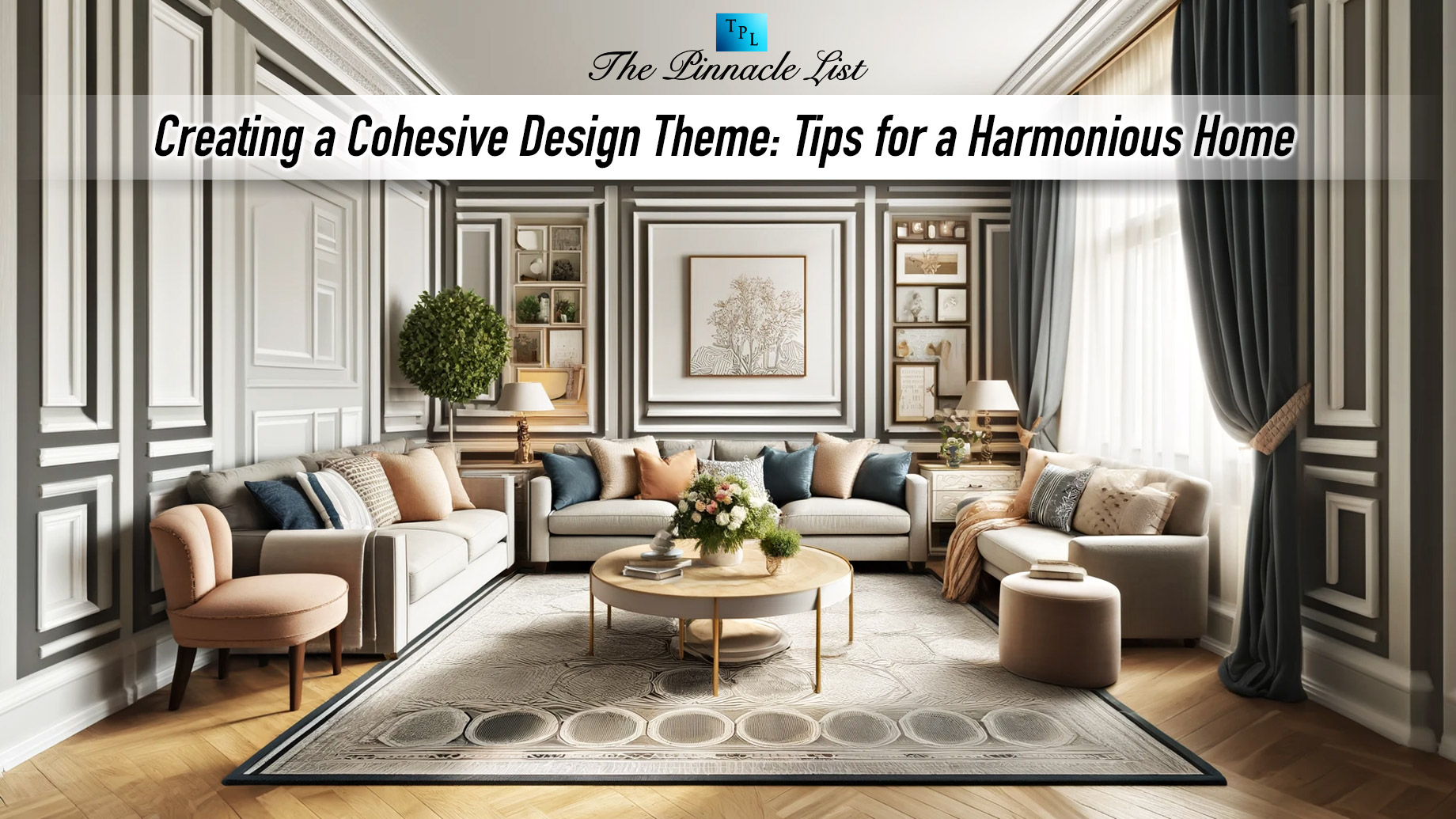
A cohesive design theme brings harmony and unity to a home, making it feel well-thought-out and inviting. Achieving this can seem daunting, but it can be a straightforward and rewarding process with the right approach.
Here are some tips to help create a cohesive design theme for a harmonious home. This post will also share insights into how an interior design course can teach you to develop and implement a unified design concept effectively.
Understand Your Style
Knowing your preferences helps you select elements that align with your taste. Browse through magazines, design blogs, and social media platforms like Pinterest for inspiration. Create a mood board to visualise how different styles and elements come together.
Choose a Colour Palette
A consistent colour palette is a foundational aspect of a cohesive design theme. Start with a base colour and add complementary shades to create depth and interest. Stick to three to five colours to avoid overwhelming the space. Use the primary colour for walls and large pieces of furniture, secondary colours for smaller furniture and accents, and an accent colour for accessories and décor items. This approach ensures that every room flows seamlessly into the next.
Balance Patterns and Textures
Patterns and textures add visual interest to a space. However, balancing them is vital in maintaining cohesion. Combine different patterns, such as stripes, florals, and geometric designs, in varying scales. For textures, mix materials like wood, metal, glass, and fabrics. Ensure that these elements share a common thread, such as a colour or style, to tie them together harmoniously.
Consistent Flooring
Using the same type of flooring throughout your home creates a sense of continuity. If a single flooring type isn’t feasible, try to keep the transition subtle. For instance, hardwood should be used in the living areas, and complementary tile should be used in the kitchen and bathrooms. This method helps maintain a unified look while catering to the practical needs of each space.
Unifying Elements
Incorporate unifying elements like trim, moulding, and hardware throughout your home. Consistent use of these details in doors, windows, and cabinets can pull different spaces together. Similarly, selecting light fixtures, doorknobs, and handles in the same finish or style reinforces the cohesive theme.
Art and Décor
Art and décor play a significant role in establishing a cohesive design theme. Choose pieces that complement your colour palette and style. Group similar items together to create focal points and maintain visual harmony. For example, a gallery wall with matching frames or a collection of vases in coordinating colours can enhance the overall theme.
Functional Furniture Arrangement
Arranging furniture in a functional yet aesthetically pleasing manner is essential for a cohesive design. Ensure that each piece of furniture complements the others in terms of style and scale. Avoid overcrowding rooms; instead, focus on creating balance and allowing for easy movement. Thoughtful furniture placement can enhance the space’s flow and contribute to a harmonious home.
Attention to Details
Small details make a significant impact on the cohesiveness of a design. Pay attention to elements like throw pillows, curtains, rugs, and other accessories. These items should match your colour palette and reflect your overall design style. Consistent use of patterns and textures in these details can tie the entire look together.
Learn from the Experts
Developing a cohesive design theme is a skill that can be honed with education and practice. An interior design course can provide the knowledge and tools needed to master this art. These courses cover essential principles such as colour theory, spatial planning, and material selection, which are crucial for creating a harmonious home.
Understanding Design Principles
These courses delve deep into the fundamental principles of design, including balance, contrast, emphasis, and harmony. Understanding these principles helps in making informed decisions about every element in a space. For example, learning to balance different textures and patterns can prevent a room from feeling chaotic.
Learning Colour Theory
A significant part of interior design education focuses on colour theory. Courses teach how to create effective colour palettes and understand the psychological impact of different colours. This knowledge is invaluable when aiming to create a cohesive design theme, as it ensures that the chosen colours enhance a space’s overall mood and harmony.
Mastering Spatial Planning
Spatial planning is another critical aspect covered in these courses. Proper spatial planning ensures that furniture arrangements and room layouts are functional and aesthetically pleasing. This skill helps create a flow between different spaces, contributing to a cohesive design.
Material and Finish Selection
Choosing the suitable materials and finishes is essential for a unified design. Interior design courses educate on various materials, their properties, and how to use them effectively. Learning about different finishes and how they interact with light and other materials can enhance the overall cohesiveness of a home’s design.
Practical Application
These courses often include practical projects that simulate real-world scenarios. These projects provide hands-on experience in developing and implementing design concepts. This useful application helps in understanding how different elements come together in a cohesive manner.
Creating a cohesive design theme is both an art and a science. Understanding your style, choosing a consistent colour palette, balancing patterns and textures, and paying attention to details are crucial steps in achieving harmony in your home. Whether designing a new home or refreshing an existing one, these tips and educational insights will help in creating a harmonious and cohesive environment.